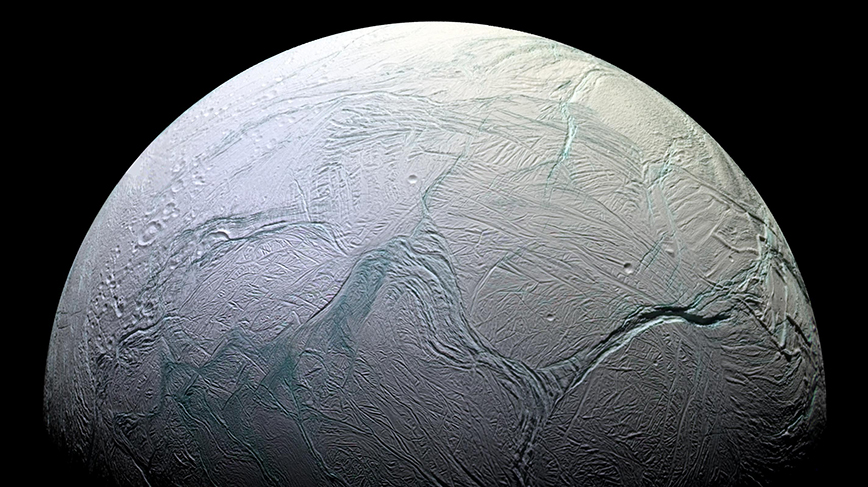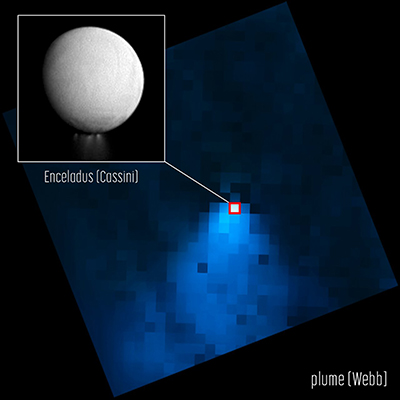Enceladus’ gargantuan water vapor halo inspires awe and wonder

Time will tell whether life has formed on one of Saturn’s moons, Enceladus, but for now people on Earth are marveling at the newly-revealed scale of an enormous water vapor plume and the “halo” it forms, trailing the moon on its orbit.

NASA released a study this afternoon about water on Enceladus plus new images taken by the gigantic new James Webb Space Telescope, which has been orbiting the Sun for the last year. One of new study’s co-authors, KTH researcher Lorenz Roth, says the finding exceeded expectations about what the Webb telescope can tell us about planets and moon in our Solar System.
Working with NASA scientists, Roth assisted in interpreting the water distribution in the enormous water plume that shoots out 400 km from Enceladus’ ice-covered ocean and forms a donut-shaped torus extending more than 10,000 km – roughly the distance from New York to Tokyo.
Today NASA dazzled the world not only with first-time images of the plume and torus together, but by showing how this torus feeds the entire water system of Saturn.
Ejected from a salt water ocean
The water vapor is ejected from the subsurface salt water ocean that is believed to blanket the moon’s surface in a thick layer of snow and which has inspired speculation about the possibility of life existing on Enceladus, if not somewhere else in the Saturnian system.

“In the ocean life-sustaining conditions might prevail and simple life forms could have theoretically evolved,” Roth says. “Now if water is ejected it might contain certain molecules that can help us in finding traces for life there.”
Both NASA and ESA have their eyes on missions that would probe this water plume to hunt for molecules that indicate the presence of life. As part of the ESA Voyages 2050 programme, just such a probe is planned for sometime between 2035 and 2050, and NASA has proposed a similar mission.
“Enceladus is an excellent candidate for conditions that might allow life,” Roth says. But he says that science still doesn’t understand how formation of life can be triggered in such an environment, and drawing any conclusions about extraterrestrial life will take time.
“We can only judge whether it is theoretically possible for life to evolve, not whether this has happened and life is there,” he says. “I do not think we will find reliable evidence for life outside Earth in my lifetime – but I am happy if I am proven wrong here.”
Read the NASA press release about the new study
David Callahan
